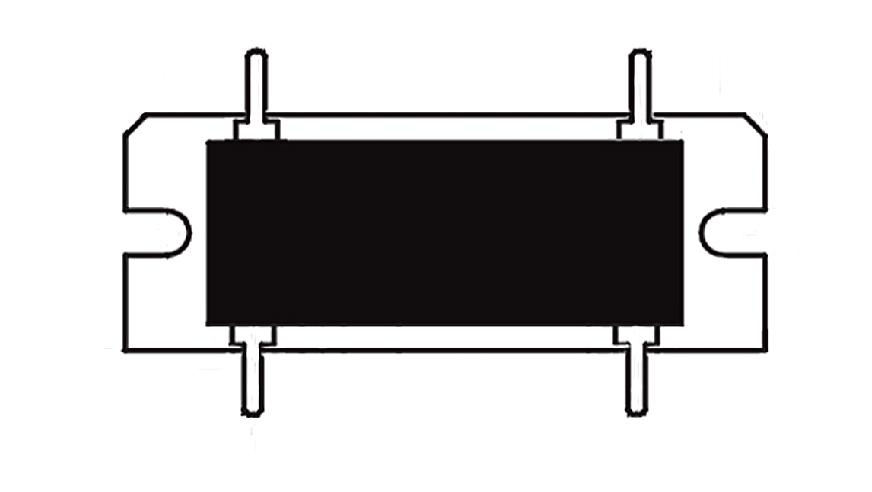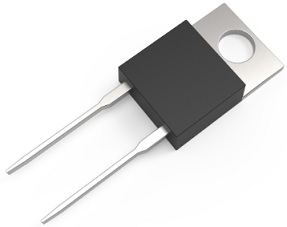Why Choose Low Inductive Resistors?
Writer:Microhm Page View:Date:2019-06-13
Since resistors are made of conductive materials, they, too, exhibit inductance as an unwanted, parasitic effect. This effect is especially noticeable if the resistor is made out of wire formed into a coil shape. Depending on the application, resistor inductance might be easily disregarded, especially in DC circuits. However, parasitic resistor inductance can be a significant factor in high-frequency AC applications. The reason for this is that the impedance of a resistor rises with the applied voltage frequency due to the increase in its reactance.

Parasitic inductance usually manifests itself either in resistors with inferior properties such as helical wire wound resistors or in other resistors at very high frequencies.
Generally, Inductance for different resistor types vary as below
Wirewound 0.03 – 56 μH
Foil <0.08 μH
Metal oxide 3 – 200 nH
Film <2 nH
To demonstrate the high frequency problem, a typical foil resistor of 220 Ω with an inductance of 0.05 μH has an impedance of approximately 380 Ω at 1GHz, which is a relative change of approximately 70% above the nominal value, which an engineer would expect if parasitic effects were not taken into account. Microwave applications, or RF applications in general are particularly sensitive to parasitic effects. Microhm provides borad range low inductive resistors, including MVR4618.It also has the characteristics of 10W power rating, 4-terminal connection, low TCR to 5ppm and hig precision to 0.05%.

The main difference between ideal resistors and ideal inductors is therefore that resistors dissipate electrical power as heat, while inductors turn electrical power into a magnetic field. Ideal resistors have zero reactance and as a result zero inductance. Unfortunately, electrical devices are not ideal in practice and even the simplest resistors have a slight parasitic inductive reactance.
The B-field of an inductor coil

Parasitic inductance usually manifests itself either in resistors with inferior properties such as helical wire wound resistors or in other resistors at very high frequencies.
Generally, Inductance for different resistor types vary as below
Wirewound 0.03 – 56 μH
Foil <0.08 μH
Metal oxide 3 – 200 nH
Film <2 nH
To demonstrate the high frequency problem, a typical foil resistor of 220 Ω with an inductance of 0.05 μH has an impedance of approximately 380 Ω at 1GHz, which is a relative change of approximately 70% above the nominal value, which an engineer would expect if parasitic effects were not taken into account. Microwave applications, or RF applications in general are particularly sensitive to parasitic effects. Microhm provides borad range low inductive resistors, including MVR4618.It also has the characteristics of 10W power rating, 4-terminal connection, low TCR to 5ppm and hig precision to 0.05%.

The main difference between ideal resistors and ideal inductors is therefore that resistors dissipate electrical power as heat, while inductors turn electrical power into a magnetic field. Ideal resistors have zero reactance and as a result zero inductance. Unfortunately, electrical devices are not ideal in practice and even the simplest resistors have a slight parasitic inductive reactance.
The B-field of an inductor coil
Keywords:
Latest News
- Resistor's role in measuring and correcting LED,,,
- Single through-hole resistors' characteristics ,,,
- Why shunt resistors for current sense applicati,,,
- Metal-film resistors with small size, high resi,,,
- 36W High-Current Shunt Resistors MMS8420,,,
- 1W Surface Mount Resistor MPR1206,,,
- An Overview of Microhm Electronics' Resistor Pr,,,
- More anti-sulfur resistors used in harsh envir,,,
- Resistance changes with temperature,,,
- 140W TO247 High Power Heatsinkable Resistor,,,
- MMS5930 is ideal for current sensing in industr,,,
- Shunt resistors selection for engineers' design,,,
- Considerations for choosing precision resistors,,,
- Ceramic Encased Cement Resistors NWH Series for,,,
- Resistors for Passive Balancing in Battery-Pow,,,
Hot Articles
- Microhm will take part in 10th Automotive World,,,
- Thanks for Visiting Microhm's Booth E5-5706 in ,,,
- Resistors in Short Supply: Blame Cars,,,
- New lunch: High Power Precision Shunt Resistor,,,,
- How to Test a Resistor,,,
- Innovative Technology, Future Electric: Electri,,,
- What is Precision Resistors?,,,
- SMD Resistors Sizes and Packages,,,
- The Construction and Features of Metal Film Res,,,
- What is a TO-220 Resisor?,,,
- Hot Selling Products: Precision Shunt Resistors,,,
- How to Calculate the Equivalent Resistance Valu,,,
- What is a Fixed Resistor?,,,
- Resistors in LED Circuits,,,
- Resistors Types and Materials Overview,,,
Resistance applications
- The Four Important Functions of Alloy Resistors,,,
- Shunt Resistor MMS8420 for High Current Stable ,,,
- Urbanization Development Bringing the Transform,,,
- Surface Mount Resistor's Size and Package ,,,
- Select the Right Resistor for Harmonic Filterin,,,
- BMS for New Energy Vehicle,,,
- Difference Between High Precision Resistors and,,,
- Precision Resistors' Construction and TCR,,,
- The Measurement Accuracy of Automotive Shunt is,,,
- Heater Blower Motor Resistor in Air Conditioner,,,
- Carbon Film Resistors' Features and Application,,,
- Miniature future for passive electronic compone,,,
- Industrial Roberts Applied to Solar Photovoltai,,,
- Why Zero-Ohm Resistors?,,,
- The Main Application for High Precision and Low,,,
